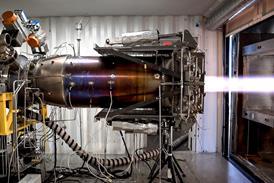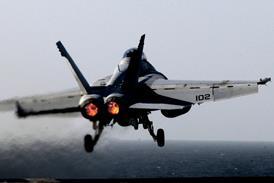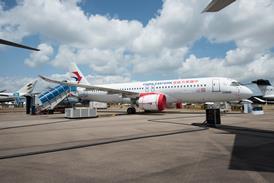The US/German team has detailed its goals for the X-31 Vectoring Extremely short take-off and landing Control and Tailless Operational Research (VECTOR) programme, including a 40% or more reduction in aircraft approach speeds.
A two-phase Extremely Short Take-Off and Landing (ESTOL) flight-test programme will total around 60 sorties, says the US-German team which includes Boeing and DaimlerChrysler Aerospace (Dasa).
Initial activity will focus on "up-and-away" take-off with more demanding "to the ground" landing approach tests planned from the second half of next year.
"In simulated ESTOL we're going to be looking at up to 70° angles of attack [AoA]. Realistically, we would like to get to 25° and we'll look at 40°. We found that above that you tend to get diminishing returns. You don't slow the aircraft enough to make the AoA necessary," says Jennifer Young, US Navy VECTOR programme manager.
It is estimated that AoAs of up to 40° could reduce aircraft approach speeds from 160kt (300km/h)to 90kt. This would reduce the amount of catapult and arrestor gear energy requirements and deck area needed to launch and recover aircraft, as well as increase aircraft bringback weight.
The third area of interest is reduced-tail and tailless configurations. The X-31 will retain its vertical fin, but collect data for future tailless designs. Tailless testing could form part of a follow-on programme at the conclusion of VECTOR in February 2002.
Aircraft changes include the installation of an IntegriNautics differential global positioning system for precision approaches and a Dasa air data system - consisting of 11 concentrically arranged ports fitted in the nose.
Source: Flight International

















